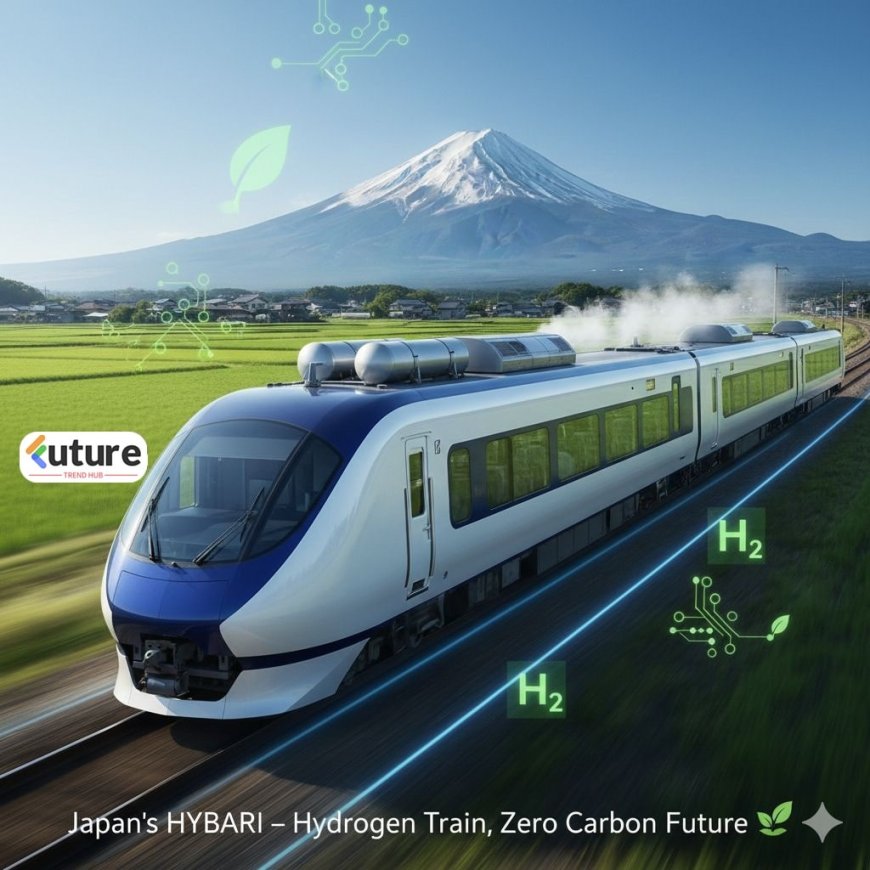Japan Unveils Its First Hydrogen-Hybrid Train: A Clean Leap Forward
Japan has always been at the forefront of technological innovation, and now it is taking a bold step toward green mobility with the unveiling of its first hydrogen-hybrid train, HYBARI. Developed by JR East in collaboration with Toyota and Hitachi, this revolutionary train represents a major leap in sustainable transportation and Japan’s commitment to achieving carbon neutrality by 2050.

What is HYBARI?
HYBARI, short for Hydrogen-Hybrid Advanced Railway Vehicle for Innovation, is a next-generation train designed to run on hydrogen fuel cells and battery storage systems. Unlike traditional diesel trains, HYBARI produces zero carbon emissions, releasing only water vapor as a byproduct.
This innovation marks a shift from fossil-fuel dependency to clean energy, aligning with Japan’s wider hydrogen strategy that spans transport, industry, shipping, and households.
Key Features of Japan’s Hydrogen-Hybrid Train
-
Zero Emissions – Runs entirely on hydrogen fuel cells and batteries, producing only water vapor.
-
Hydrogen Tanks on the Roof – Instead of overhead wires, the train carries hydrogen tanks mounted on top, ensuring smooth energy supply.
-
Travel Range – Capable of running about 140 km per hydrogen fueling during test conditions.
-
Quiet & Smooth Rides – Lower noise and reduced vibrations compared to diesel-powered trains.
-
Cost-Effective for Rural Areas – Ideal for non-electrified railways, where laying electric lines is too expensive.
-
Future Deployment – Commercial rollout is expected around 2030 after successful testing.
Why HYBARI Matters for Green Transport
Rail transport is one of the most efficient modes of travel, but diesel locomotives still contribute significantly to greenhouse gas emissions. HYBARI addresses this challenge by offering a sustainable, eco-friendly, and practical solution for regions where electrification is not feasible.
By cutting emissions and reducing reliance on diesel, hydrogen-powered trains like HYBARI can help nations meet climate goals while ensuring passenger comfort and efficiency.
Japan’s Hydrogen Vision
HYBARI is not an isolated project — it is part of Japan’s national hydrogen roadmap, which envisions replacing fossil fuels with clean hydrogen energy across multiple sectors. From trains and buses to factories and households, Japan aims to lead the world in hydrogen innovation.
With the target of achieving net-zero emissions by 2050, hydrogen trains are expected to play a pivotal role in transforming public transport while inspiring other countries to follow suit.
Final Thoughts
The debut of HYBARI, Japan’s first hydrogen-hybrid train, is a milestone in sustainable mobility. It proves that hydrogen fuel cells can power large-scale transport effectively, offering clean, quiet, and efficient journeys for the future.
As commercial adoption progresses toward 2030, HYBARI could become a model for other nations seeking green alternatives to diesel trains. This innovation not only strengthens Japan’s global leadership in clean technology but also brings the world closer to a carbon-neutral future.







